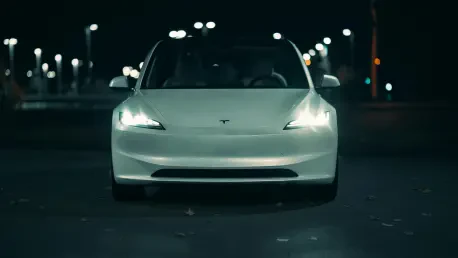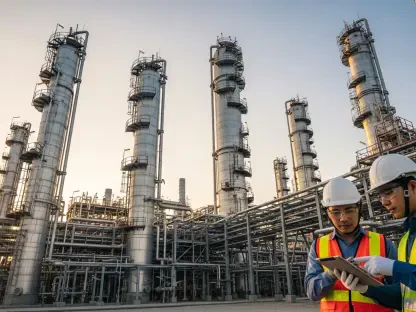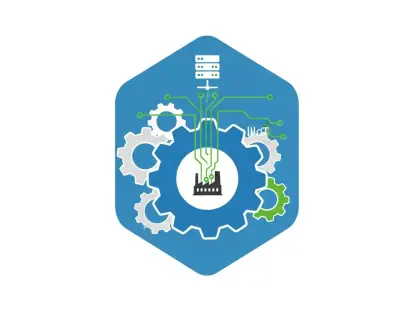India’s bold strategy to emerge as a global powerhouse in electric vehicles (EVs) and advanced manufacturing has encountered a significant hurdle with China filing a formal complaint at the World Trade Organization (WTO), highlighting escalating tensions over India’s Production Linked Incentive (PLI) schemes and EV policies. This disagreement, recently brought to light, reveals a profound conflict between national ambitions for industrial growth and the overarching principles of global trade fairness, promising a contentious battle on the world stage. As both nations navigate this dispute, the implications extend beyond bilateral relations, touching on the future of sustainable technology markets and international economic policies.
Understanding the Core Dispute
India’s Policies Under Fire
India’s push for self-reliance in critical sectors has led to the implementation of several key initiatives, notably the PLI schemes for advanced chemistry cell (ACC) battery storage, automobiles, and auto components, alongside specific policies to boost EV manufacturing. These programs are designed to incentivize local production by offering financial benefits to companies that prioritize domestic content, aiming to reduce reliance on imports and foster job creation. With substantial budgets allocated—such as over Rs 18,000 crore for battery storage and nearly Rs 26,000 crore for automotive sectors—these measures signal a clear intent to position India as a competitive player in high-growth industries. However, China contends that such policies create a discriminatory environment by favoring Indian-made goods, effectively sidelining foreign competitors and disrupting the balance of fair trade.
The criticism from China centers on the notion that India’s incentives distort market dynamics, particularly in a sector as pivotal as EVs, where global competition is fierce. By tying financial rewards to the use of locally sourced materials and components, India’s policies are seen as erecting barriers to imported products, especially those from Chinese manufacturers who dominate the global supply chain. This approach, while beneficial for nurturing domestic industries, raises questions about compliance with international trade commitments. The clash highlights a fundamental challenge: how can a nation protect and grow its own industries without being perceived as shutting out global partners? The stakes are high as India defends its vision for economic sovereignty against allegations of unfair practices.
China’s Grievances and Legal Basis
China’s formal complaint, lodged with the WTO, marks a significant escalation in its opposition to India’s industrial policies, requesting consultations as an initial step toward resolution. The grievance specifically targets the PLI schemes and EV manufacturing incentives, accusing them of breaching key WTO agreements like the Subsidies and Countervailing Measures (SCM) Agreement, the General Agreement on Tariffs and Trade (GATT), and the Trade-Related Investment Measures (TRIMs) Agreement. According to the complaint, these Indian measures unfairly prioritize domestic production, thereby nullifying the trade benefits that China should enjoy under global trade rules. This legal challenge underscores China’s frustration with what it perceives as a direct impediment to its export-driven economy, particularly in strategic sectors.
Should the requested consultations fail to yield a mutually agreeable solution, China has the option to elevate the matter by seeking the formation of a WTO dispute panel to adjudicate the issue. Such a move could prolong the conflict and intensify scrutiny of India’s policy framework, potentially setting a precedent for how similar disputes are handled globally. The legal arguments put forth by China focus on the principle of non-discrimination in trade, asserting that India’s incentives create an uneven playing field. This situation not only strains economic ties between the two nations but also brings to the forefront the delicate balance between fostering national industries and adhering to international obligations, a dilemma that many countries face in today’s interconnected economy.
Global Context and Strategic Stakes
The EV Market as a Global Flashpoint
The EV and renewable energy sectors have emerged as critical arenas in international trade, with nations vying for dominance in a market driven by the urgent need for sustainable solutions. China stands as a titan in EV production, grappling with overcapacity at home while seeking to expand its footprint in lucrative markets like India, which holds immense growth potential due to its vast consumer base and government-backed green initiatives. However, India’s protective policies, which echo actions like the European Union’s recent imposition of a 27% tariff on Chinese EVs, signal a growing resistance to Chinese market penetration. This global trend reflects a shared concern among nations to safeguard their own industries against the overwhelming supply chains of Chinese manufacturers.
Beyond individual policies, the broader landscape reveals a competitive struggle for technological and economic leadership in green industries. As countries transition to cleaner energy and transportation systems, the stakes in controlling EV supply chains—from battery production to vehicle assembly—have skyrocketed. For China, barriers like India’s incentives represent not just a loss of market share but a challenge to its global ambitions. Meanwhile, India views its policies as essential to building a robust domestic ecosystem that can compete on the world stage. This friction in the EV sector is emblematic of larger geopolitical and economic rivalries, where trade policies become tools of national strategy, often at the expense of international harmony.
Trade Imbalance and Economic Tensions
A deeper look at the economic relationship between India and China reveals a stark imbalance that fuels the current dispute over trade policies. India faces a significant trade deficit, which reached $99.2 billion in the fiscal year ending recently, driven by a sharp 11.52% rise in imports from China contrasted with a 14.5% decline in exports to the same market. This lopsided dynamic, with imports far outpacing exports, has intensified India’s resolve to bolster domestic manufacturing through schemes like the PLI, aimed at reducing dependency on foreign goods, particularly from China. Such economic disparities provide a critical backdrop to understanding why India is prioritizing self-reliance over unrestricted trade access.
This trade imbalance also amplifies the strategic motivations behind China’s WTO complaint, as India’s market remains a vital target for Chinese exporters seeking to offload surplus production, especially in high-demand sectors like EVs. The tension is not merely about specific policies but reflects a broader struggle for economic leverage between two of Asia’s largest economies. While India seeks to recalibrate its trade dynamics and build industrial resilience, China aims to protect its export interests and maintain influence in key global markets. The outcome of this dispute could reshape not only bilateral trade relations but also influence how other nations address similar economic disparities through policy measures, potentially setting off a chain reaction in global trade practices.
Broader Implications for Trade and Policy
National Goals vs. Global Trade Rules
India’s industrial strategies, particularly through the PLI schemes and EV policies, embody a deliberate effort to achieve self-reliance in sectors deemed critical for future growth and sustainability. These initiatives align with global goals of transitioning to green technologies, offering incentives for fresh investments, job creation, and cost reductions through economies of scale. Yet, the approach risks being branded as protectionist, as it prioritizes local content over imported goods, potentially clashing with the WTO’s ethos of free and fair trade. The challenge lies in balancing the pursuit of national economic security with the obligations of international agreements, a tightrope that India must navigate carefully to avoid broader diplomatic and economic repercussions.
The potential fallout from this dispute extends beyond immediate trade relations, as it questions the compatibility of ambitious national policies with a rules-based global trading system. If India’s measures are deemed non-compliant by the WTO, it could face pressure to revise its strategies, possibly undermining years of industrial planning. Conversely, a successful defense could embolden other nations to adopt similar protective measures, further straining the fabric of global trade consensus. This situation underscores a pivotal debate: to what extent can countries prioritize domestic imperatives in strategic sectors without inviting conflict or isolation on the international stage? The resolution will likely serve as a benchmark for future trade disputes in emerging industries.
Rising Protectionism Worldwide
India’s policies are not an isolated phenomenon but part of a broader wave of protectionism sweeping across the globe, particularly in high-stakes industries like EVs and renewable energy. Similar to the European Union’s imposition of tariffs on Chinese EVs to shield its own markets, India’s incentives reflect a growing tendency among nations to fortify domestic industries against foreign competition. This trend, driven by concerns over economic sovereignty and strategic autonomy, often prioritizes short-term national gains over long-term global trade harmony. As more countries adopt such measures, the risk of fragmented markets and retaliatory trade actions looms large, threatening the stability of international economic systems.
The implications of this rising protectionism are profound, potentially leading to a domino effect where trade barriers multiply, and cooperation diminishes. For industries like EVs, which rely on global supply chains for components and innovation, such fragmentation could slow technological progress and inflate costs for consumers worldwide. While nations like India aim to build resilience against external dependencies, the broader consequence might be an erosion of the collaborative spirit that has historically driven economic growth. Looking back, this period was marked by intense debates over how to reconcile national interests with the imperatives of a connected world, setting the stage for critical decisions on the future of trade policy in a green economy. Moving forward, the focus should be on fostering dialogue and crafting frameworks that allow for domestic growth without sacrificing global partnerships, ensuring that disputes like this pave the way for more equitable trade solutions.









